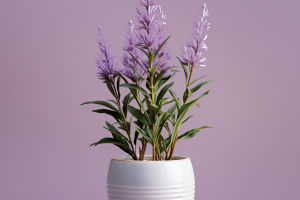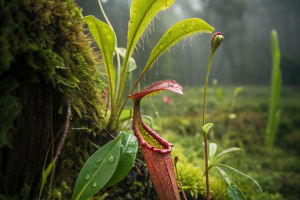Starting the year with healthier eating habits often involves adding salads to your diet. You may find yourself buying lettuce and other leafy greens, but after a few days in the refrigerator, they might not look as fresh.
Discoloration or a soggy texture can raise concerns about their safety and appeal. Experts weigh in on what these changes mean and how to handle them.
Why Does Lettuce Turn Pink or Red?
The pink or reddish tint that appears on certain types of lettuce, such as romaine, is known as "rusting." According to Katie Sabatini, a food safety expert, this is a natural process influenced by improper handling or storage. When leaves are bruised, cut, or exposed to too much moisture, rusting develops more quickly.Rusting occurs as lettuce oxidizes and produces protective compounds called polyphenols. These compounds help prevent the growth of mold and fungi, but they can give the lettuce an unappealing pinkish appearance.
Exposure to gases emitted by other produce can also contribute to this effect.While rusting may look unappetizing, it doesn’t necessarily mean the lettuce is unsafe. If the leaves are still firm and crisp, the discolored portions can be trimmed off and the rest safely consumed.
What Causes Packaged Greens to Become Wet or Soggy?
Leafy greens are fragile and can easily become wilted or damaged during harvesting, packaging, and transport. As the leaves age, they release moisture, which can result in soggy or darkened areas. Prepackaged greens are especially vulnerable to this due to the confined environment and potential exposure to temperature fluctuations.
Excess moisture can sometimes create an environment where harmful bacteria, such as salmonella, can thrive. To avoid this risk, discard any greens that appear slimy, unusually dark, or have an unpleasant smell.
How to Choose Fresh Packaged Greens
When shopping for packaged lettuce, inspect the product carefully. Avoid packages with:
- Excessive liquid pooling inside, especially if it’s cloudy or discolored.
- Slimy, dark, or wet leaves.
- Visible mold or spots.
Check the dates on the packaging, such as best-by and sell-by dates, to ensure freshness. If the greens still look and smell good beyond these dates, they’re likely safe to eat.
Tips for Storing and Using Greens at Home
Proper storage can extend the freshness of salad greens. Keep them in the refrigerator at a temperature between 34 and 38 degrees Fahrenheit, preferably in the crisper drawer. This helps maintain a consistent and cool environment.
Store leafy greens separately from other produce to minimize exposure to gases that may accelerate spoilage. Before eating, remove any leaves that are soggy, slimy, or discolored. Always discard greens with an unpleasant odor, as this can indicate spoilage.
If only a few leaves in the package seem off, removing them may prevent the rest from going bad. However, if most of the greens look unappealing, it’s better to discard the entire package or compost it to reduce waste.
Stay Cautious
It’s always wise to err on the side of caution when assessing the safety of salad greens. Some harmful microorganisms cannot be detected by sight or smell, so maintaining good storage practices and inspecting your greens carefully are key to enjoying them safely.
How to Make Sure Lettuce You’re Eating Is Safe From Bacteria
Video by Inside Edition


